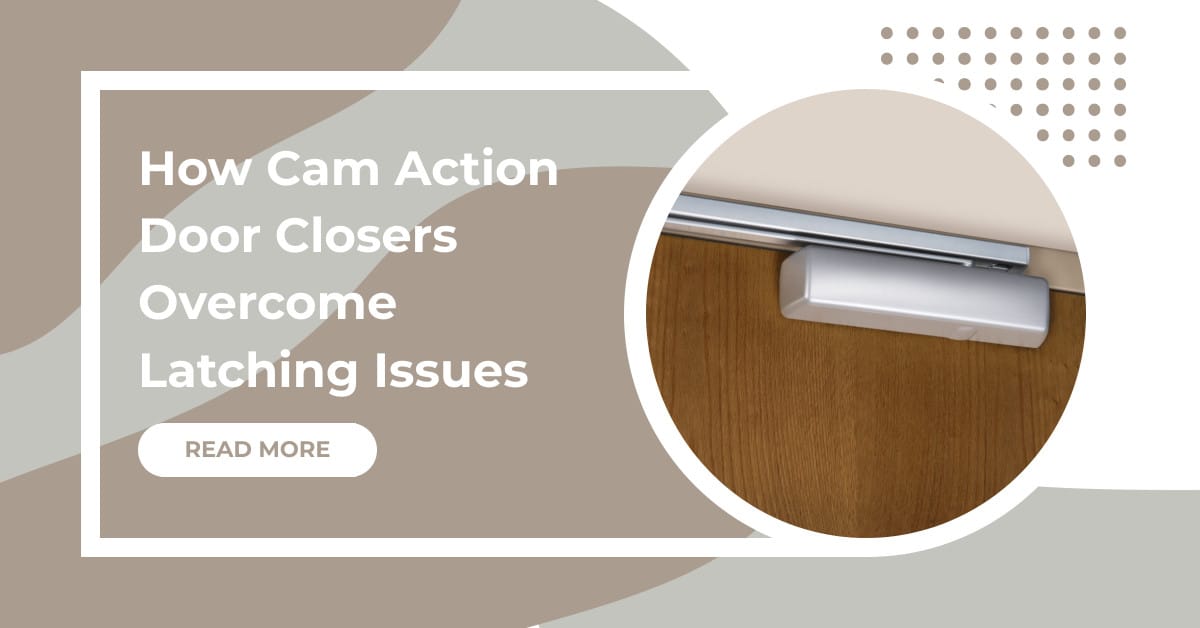How Cam Action Door Closers Overcome Latching Issues
Cam action closers are the right choice where proper latching, accessibility, and aesthetics are a priority. Learn how cam action door closers overcome latching issues here.

One of the most essential components of a door assembly is the closer. It provides mechanical control as a door opens, closes, and latches. There are two types of door closers: 1) cam action and 2) rack and pinion. Cam action closers are beneficial because they operate with less friction. This results in uniform operation with low opening force and secure latching.
Cam action closers are the right choice where proper latching, accessibility, and aesthetics are a priority.
Cam vs rack and pinion closers
A cam action closer has two rotating parts. A vertical follower is attached to a heart-shaped cam. Roller bearings on either side are connected to horizontal springs. As the springs compress during door opening, the rollers simultaneously turn the cam and follower mechanism. Watch this quick video to see how the entire operation is smooth and uniform.
A rack and pinion closer uses a circular gear (pinion) on top of a moveable track with grooves (rack). As the door spring is compressed, it causes both components to rotate and produce linear motion.
Benefits of cam action closers
The advantage of a cam closer over rack and pinion is twofold. The first is during opening. With a rack and pinion closer, opening effort must increase to overcome the spring compression. The wider the door is opened, the harder someone must push. However, a cam closer equalizes this force. It ensures an even amount of effort is needed as the door swings open.
The second difference is during closing. With rack and pinion, the closing force decreases as the spring tension diminishes. This often leads to the door failing to latch, which is a major concern for fire safety, access control, and energy consumption. By contrast, the cam action adds a crucial increase in closing force immediately before latch.
Cam action closer applications
Door closers should match the door type. Cam closers are frequently paired with Grade 1 door hardware.
For a refresher on the three grades of door closers, please read our post from Norton Rixson here.
Typical applications include:
- Exterior doors
- High wind environments
- Stair towers
- High-traffic interior doors
Cam action closers are also ideal for doors that need to satisfy ADA compliance and ANSI/BHMA A117.1. Because accessibility requirements have a low opening force, closing force is often insufficient to latch properly. But a cam action closer will overcome stack effect or wind pressure during closing while maintaining low opening force.
Another advantage of a cam closer is its sleek profile. Architects will appreciate that its housing is slimmer than a rack and pinion. The slide arm can also be surface mounted for a flush appearance.
ASSA ABLOY offers multiple options of cam action closers for slide arm and track application. These feature adjustable sweep speeds, closing force, closing and latch speed, backcheck cushioning, and spring sizes. Cast aluminum housing can be specified in a variety of metallic finishes.
Our knowledgeable staff is eager to help you understand the benefits of door closers. Fill out the form below to get in touch with us today.